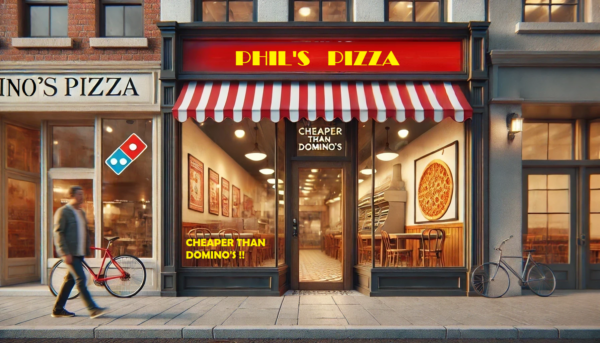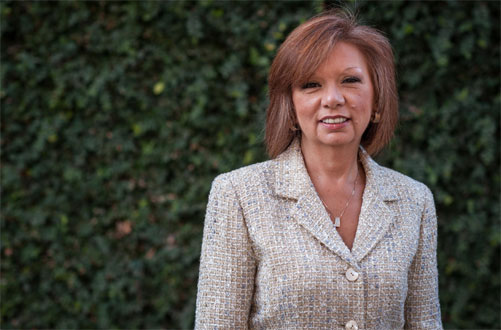
Trademark fair use is the use of another's trademark or service mark in manner that does not constitute trademark use. Trademark fair use is a defense to a claim of trademark infringement. Fair use does not qualify as infringement and is lawful. There are two main types: classic fair use and nominative fair use. This article explains trademark fair use and provides examples.
Trademark fair use is a legal principle that allows individuals or businesses to use another’s trademark without infringing the trademark owner’s rights, where the trademark is not used in the nature of a source identifier. There are two primary categories of trademark fair use. These are classic fair use and nominative fair use. Classic fair use occurs when a trademark is used descriptively, without implying that the trademark owner endorses or is affiliated with the user. Nominative fair use, on the other hand, permits the use of a trademark to identify the goods or services of the trademark owner when there is no other practical way to do so.
The Lanham Act forms the legal foundation for the fair use of trademarks, setting guidelines to prevent confusion about the source of goods or services while allowing certain uses of trademarks. Factors influencing fair use determinations include good faith, necessity of description, and potential consumer confusion. Trademark fair use is essential for fostering competition and innovation. It allows businesses to accurately describe their products, compare them to others, and provide consumers with valuable information. Without this doctrine, the marketplace would be stifled, and consumers would be deprived of critical information needed to make informed decisions.
Businesses should have a good understanding trademark fair use, as misunderstanding this concept can lead to legal missteps and litigation. The trademark fair use doctrine is not just a legal shield but a facilitator of free expression and informative commercial communications. The doctrine allows businesses engage in comparative advertising, and contribute to news stories without overstepping legal protections.
Trademark fair use is a legal doctrine that allows certain uses of trademarks without permission to prevent confusion about the source of goods or services. Classic fair use applies when a trademark is used descriptively, meaning it describes the user’s own products rather than indicating their source. This type of use is also known as descriptive fair use and is crucial for businesses to describe their goods or services accurately.
Nominative fair use permits the use of a trademark. This occurs when it is essential to identify the goods or services of the trademark owner. This type of fair use is particularly important when there is no other practical way to refer to a product or service without using the trademark. For example, using the term “iPhone” to describe a compatible accessory is often deemed nominative fair use.
Factors influencing fair use determinations include the necessity to describe goods, the potential for consumer confusion, and the good faith of the user. Understanding these factors helps businesses and individuals make informed decisions about the use of trademarks and navigate potential legal challenges.
Trademark fair use encompasses two primary categories: descriptive fair use and nominative fair use. Each type serves a unique purpose and has specific conditions under which it applies.
Understanding these types is essential for navigating the legal landscape and ensuring compliance with trademark law.
Descriptive fair use allows the use of a trademark to describe a user’s own products rather than indicating the source. This type of fair use is particularly relevant for descriptive trademarks, which include terms that describe a characteristic of the goods or services. For instance, the term “American Airlines” is descriptive of an airline service. Descriptive fair use permits the application of these terms to describe an airline providing service in America: Delta airlines is an American airline. The defense of descriptive fair use allows businesses to describe their products accurately without implying endorsement, thus providing a descriptive meaning to the terms used.
In King-Seeley Thermos Co. v. Aladdin Industries, Inc. (2d Cir. 1963), the term "thermos" to describe vacuum-insulated bottles. The court found that while "thermos" was originally a trademark, it had become genericized due to widespread public use. However, the court also recognized that consumers still associated the term with the original manufacturer, King-Seeley. To balance these interests, the court allowed competitors to use "thermos" descriptively, but only in lowercase and with modifiers to distinguish their products from the original Thermos brand. This case established the principle that trademarks can lose their exclusive status if they become generic, but that some limited descriptive use may still be permissible.
However, descriptive fair use comes with limitations. If the use of a descriptive term causes confusion among the public, fair use would no longer apply. Therefore, it is crucial for businesses to ensure that their use of descriptive trademarks does not mislead consumers about the source of the products. This balance is essential to maintain the integrity of the trademark while allowing descriptive use.
Moreover, descriptive fair use generally involves descriptive, geographically descriptive, and personal names. Fanciful and arbitrarily suggestive trademarks, which are inherently distinctive, do not fall under descriptive fair use and are protected against such uses.
Nominative fair use allows the use of another’s trademark. This is permissible when referring to the trademark owner’s goods and services under certain conditions. This type of fair use is particularly relevant when there is no other practical way to identify the product or service without using the trademark. For example, using the term “Lexus” to refer to a Lexus car in a review or advertisement is considered nominative fair use.
Nominative fair use qualifies if the use of the trademark meets certain criteria. Firstly, the product or service must not be readily identifiable without the use of the trademark. Secondly, only as much of the trademark as necessary should be used to identify the goods or services. Lastly, the use should not imply sponsorship or endorsement by the trademark holder or the trademark owner.
In New Kids on the Block v. News America Publishing, Inc. (9th Cir. 1992), News America Publishing conducting polling about the musical group News Kids on the Block (NKOTB). NKOTB sued for trademark infringement for the use of their name in the poll. The court found "nominative fair use", which allows the use of a trademark to identify a person, place, or thing in a factual manner without the use for trademark purposes. The court held that using the band's name in a poll about the band was permissible because there was no other way to refer to the band without using its trademarked name . This case is significant because it recognizes that some uses of trademarks are necessary for communication and should not be considered infringement.
Nominative fair use enables businesses and individuals to engage in comparative advertising, product reviews, reporting and journalism, and other forms of commentary without infringing on trademark rights. It helps maintain a balance between protecting trademark owners and allowing necessary uses of trademarks for identification and communication, including the nominative fair use defense.
Trademark fair use is relevant in various practical contexts, such as comparative advertising, product reviews, and parodies. These applications demonstrate how the principles of fair use support free speech, competition, and important consumer information.
Comparative advertising is a common example of trademark fair use. It allows businesses to use another’s trademark to compare products and highlight differences, benefiting consumers and the marketplace. Under trademark law, using another’s trademark for comparison in advertisements is permitted, provided it is done in good faith and does not mislead consumers.
Nominative fair use often occurs in comparative advertising when consumers recognize another’s trademark or else’s trademark upon identification. For instance, an advertisement comparing the features of two smartphones might use the trademarks of both brands to make the comparison clear and effective. However, it is essential to use only as much of the trademark as necessary to avoid implying endorsement or sponsorship.
While comparative advertising can be beneficial, it also carries risks. Claims of superiority must be substantiated to avoid legal problems, and any misleading comparisons can lead to disputes and potential trademark infringement claims. Therefore, businesses must exercise caution and ensure their comparative advertising is accurate and fair.

Product reviews and commentary are protected under nominative fair use, allowing the public to discuss, compare, and critique protected trademarks. Mentioning a brand name is often necessary to provide a meaningful review or comparison of goods or services. This type of fair use is crucial for consumers and media, as it enables informed decision-making and fosters transparency.
Parody and criticism fall under the umbrella of trademark fair use, provided they clearly indicate that the content is a joke and not an affiliated promotion. Parody uses humor or satire to comment on a trademark, and it must be evident to the audience that it is not an endorsement by the trademark owner.
For instance, a parody of a popular brand’s advertisement that humorously exaggerates its claims can be permissible under fair use, as long as it avoids misleading consumers about sponsorship. In the Jack Daniel’s Properties, Inc. v. VIP Products LLC case, the U.S. Supreme Court addressed the boundaries of parody as a defense under trademark law. VIP Products marketed a dog toy resembling Jack Daniel's whiskey bottle, substituting "Jack Daniel's" with "Bad Spaniels" and altering other label elements humorously. Jack Daniel's contended this infringed and diluted its trademarks. VIP Products countered, asserting First Amendment protection due to the parodic nature of the toy.
The Court unanimously ruled that when a trademark is employed to identify the source of the defendant's own goods—essentially using the trademark as a trademark—the First Amendment does not automatically shield such use from infringement claims. Consequently, the standard likelihood-of-confusion analysis under the Lanham Act applies, even for parodic expressions.
This decision delineates the limits of parody as a fair use defense in trademark law. While parody can serve as commentary or criticism, its protective scope is not absolute. The Court emphasized that the mere presence of humor or parody does not exempt a defendant from liability if the use confuses consumers regarding the source or sponsorship of goods. Therefore, entities employing another's trademark in a parodic context must ensure their use does not mislead consumers about the origin of the products to avoid infringement liability.
The concept of fair use is acknowledged globally, but its application varies by jurisdiction. While some regions may not label it as fair use, similar principles apply to allow certain uses of trademarks. Businesses and individuals must familiarize themselves with local trademark laws to navigate trademark usage effectively. Common law jurisdictions, such as the United States, employ fair use principles in trademark cases, allowing certain usages of marks. However, the subjective nature of fair use means that interpretations can vary across different legal contexts, making it essential to understand the specific requirements of each jurisdiction.
Companies operating internationally must be particularly careful, as what is considered fair use in one country might not be legally allowed in another. Staying informed about local laws and regulations is crucial to avoid legal disputes and ensure compliance.
For businesses, understanding trademark fair use is vital to safeguard their brands and avoid unintentional infringements. Companies should educate stakeholders about trademark rights and monitor how trademarks are used, especially in digital spaces like social media and e-commerce. This proactive approach can significantly reduce the risk of infringement.
Additionally, businesses should stay informed about changes in trademark laws as they can impact operations and compliance. Avoiding the use of widely recognized descriptive trademarks that may lead to confusion is also essential. By navigating trademark fair use carefully, businesses can protect their intellectual property and operate within legal boundaries.
Asserting fair use comes with potential risks and challenges. Trademark owners may challenge the legitimacy of the fair use claim, leading to litigation risks. Engaging in comparative advertising using fair use can result in legal disputes if the comparison is seen as misleading or unfair. Therefore, businesses must carefully apply fair use principles accurately to avoid trademark infringement claims, which can have significant financial consequences.
Consulting an trademark attorney is essential to assess cases and ensure proper application of fair use. If you’re unsure whether your use of a trademark qualifies as fair use, an attorney can provide clarity and guidance. They can also assist in responding to cease-and-desist letters and handling any legal disputes.
Legal counsel is crucial for businesses and individuals facing challenges or disputes regarding trademark usage. An attorney can help you understand your rights and obligations, ensuring that your actions are legally sound and protect your interests.
Trademark fair use is a complex yet essential concept for businesses and individuals. Understanding its types, applications, and legal framework can help navigate potential legal challenges and support fair competition. By applying fair use principles correctly, businesses can describe their products accurately, engage in comparative advertising, and contribute to informative discourse without infringing on trademark rights.
Staying informed and consulting with legal experts can ensure that your use of trademarks remains within legal boundaries.
© 2025 Sierra IP Law, PC. The information provided herein does not constitute legal advice, but merely conveys general information that may be beneficial to the public, and should not be viewed as a substitute for legal consultation in a particular case.

"Mark and William are stellar in the capabilities, work ethic, character, knowledge, responsiveness, and quality of work. Hubby and I are incredibly grateful for them as they've done a phenomenal job working tirelessly over a time span of at least five years on a series of patents for hubby. Grateful that Fresno has such amazing patent attorneys! They're second to none and they never disappoint. Thank you, Mark, William, and your entire team!!"
Linda Guzman

Sierra IP Law, PC - Patents, Trademarks & Copyrights
FRESNO
7030 N. Fruit Ave.
Suite 110
Fresno, CA 93711
(559) 436-3800 | phone
BAKERSFIELD
1925 G. Street
Bakersfield, CA 93301
(661) 200-7724 | phone
SAN LUIS OBISPO
956 Walnut Street, 2nd Floor
San Luis Obispo, CA 93401
(805) 275-0943 | phone
SACRAMENTO
180 Promenade Circle, Suite 300
Sacramento, CA 95834
(916) 209-8525 | phone
MODESTO
1300 10th St., Suite F.
Modesto, CA 95345
(209) 286-0069 | phone
SANTA BARBARA
414 Olive Street
Santa Barbara, CA 93101
(805) 275-0943 | phone
SAN MATEO
1650 Borel Place, Suite 216
San Mateo, CA, CA 94402
(650) 398-1644. | phone
STOCKTON
110 N. San Joaquin St., 2nd Floor
Stockton, CA 95202
(209) 286-0069 | phone
PORTLAND
425 NW 10th Ave., Suite 200
Portland, OR 97209
(503) 343-9983 | phone
TACOMA
1201 Pacific Avenue, Suite 600
Tacoma, WA 98402
(253) 345-1545 | phone
KENNEWICK
1030 N Center Pkwy Suite N196
Kennewick, WA 99336
(509) 255-3442 | phone
2023 Sierra IP Law, PC - Patents, Trademarks & Copyrights - All Rights Reserved - Sitemap Privacy Lawyer Fresno, CA - Trademark Lawyer Modesto CA - Patent Lawyer Bakersfield, CA - Trademark Lawyer Bakersfield, CA - Patent Lawyer San Luis Obispo, CA - Trademark Lawyer San Luis Obispo, CA - Trademark Infringement Lawyer Tacoma WA - Internet Lawyer Bakersfield, CA - Trademark Lawyer Sacramento, CA - Patent Lawyer Sacramento, CA - Trademark Infringement Lawyer Sacrament CA - Patent Lawyer Tacoma WA - Intellectual Property Lawyer Tacoma WA - Trademark lawyer Tacoma WA - Portland Patent Attorney - Santa Barbara Patent Attorney - Santa Barbara Trademark Attorney